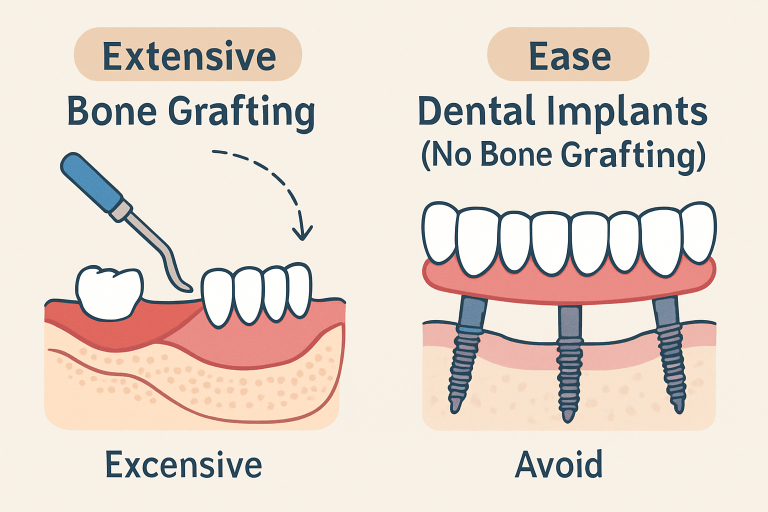Health
Overcoming Jawbone Loss Without Extensive Grafting
Understanding Jawbone Loss and Its Challenges
Jawbone loss hinders many patients seeking dental implants. Long-term tooth loss can cause bone shrinkage or deterioration, making implant placement more complicated. Bone loss occurs because tooth roots stimulate and maintain healthy bone tissue; without them, bone resorbs over time. The main solution has been extensive bone grafting, which rebuilds lost bone using transplanted or synthetic material. Although effective, grafting requires months of healing, increases costs, and risks complications like infection or failure. Many find the traditional method intimidating due to surgery, prolonged recovery, and delayed results.
Fortunately, dental technology has evolved, offering less invasive options, especially in regions like Tulsa. Now, specialists use innovative techniques that don’t depend on the patient’s original bone volume, enabling strong, lasting restorations even in previously high-risk cases. For example, the all-on-4 full mouth implants Tulsa OK technique has opened doors for many who previously had limited choices due to bone quality or density, giving renewed hope to people who believed they would never qualify for dental implants.
Zygomatic implants offer a solution for those with severe upper jawbone loss, caused by missing teeth or periodontal disease. Unlike traditional implants that require a limited jawbone, zygomatic implants are longer and placed into the denser zygomatic (cheek) bone, thereby avoiding extensive grafting and enabling immediate stabilization of prosthetics, often on the same day. This approach benefits cancer survivors and trauma patients with significant jawbone deficits, allowing fixed teeth without complex surgery. Research shows a 96.1% success rate after five years. The All-on-4 concept involves four implants per arch, often angled to optimize bone utilization and reduce grafting, and sometimes supports temporary teeth on the same day, thereby improving recovery time and quality of life.

Angled Implants for Moderate Bone Loss
Patients with moderate jawbone loss may benefit from angled, or tilted, implants. This technique places implants to engage denser bone and avoid invasive grafting, often bypassing sensitive structures such as the maxillary sinuses or the inferior alveolar nerve. It minimizes or eliminates the need for bone grafting, thereby accelerating treatment and improving comfort. Angled implants support crowns or dentures, thereby reducing surgical complexity and the need for extended healing times. For mild to moderate bone loss, they are a minimally invasive, durable option. A study showed no difference in bone loss between axial and inclined implants, confirming angled implants as a viable choice.
The Role of Advanced Imaging in Modern Dentistry
Modern imaging tools, particularly 3D cone-beam computed tomography (CBCT), have significantly enhanced implant dentistry. These scanners give high-resolution, 3D images of the jaw and surrounding structures, aiding minimally invasive implant planning. Dentists utilize CBCT data to assess bone density and volume, identify hidden features, and determine the optimal placement of implants. Sometimes, advanced imaging reveals sufficient bone in areas missed by traditional X-rays, thereby avoiding the need for grafts. It also helps avoid nerves, blood vessels, or sinuses, reducing surgical risks. This technology enhances treatment planning, patient safety, and outcomes, particularly in complex cases involving jawbone loss.
Why Consultation Matters
The best treatment options vary and should be evaluated by a dental implant specialist. Factors such as bone density, gum health, overall well-being, and aesthetic goals influence the approach. An expert can use imaging and assessment to create a personalized plan that minimizes invasive procedures and ensures long-term success. Early consultation helps address bone loss early and enables conservative, predictable solutions. Many patients are surprised that current advancements often allow major surgery to be avoided. Partnering with a knowledgeable professional helps patients make informed decisions for a healthy, functional smile.
Conclusion
Jawbone loss no longer hinders the placement of dental implants. Techniques such as zygomatic and angled implants, combined with advanced imaging, enable the placement of strong, permanent teeth without the need for extensive bone grafting. These innovations make implants safer and more accessible, even in cases of significant bone loss. Consult a dental professional to explore modern, minimally invasive options.




